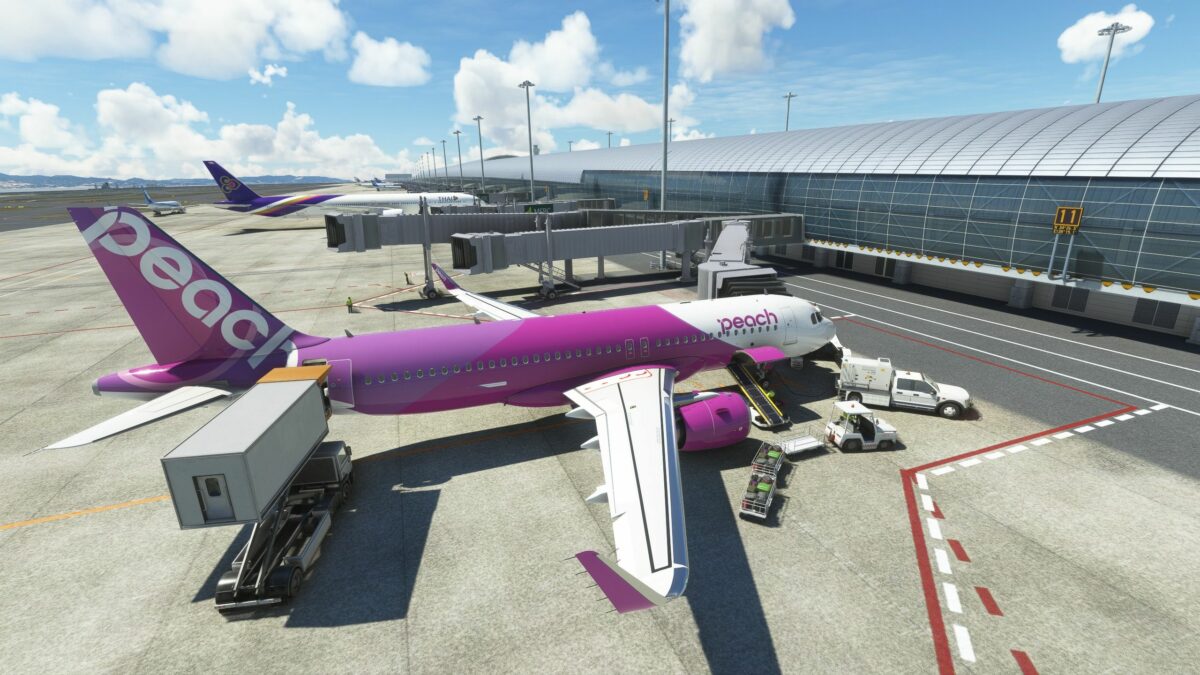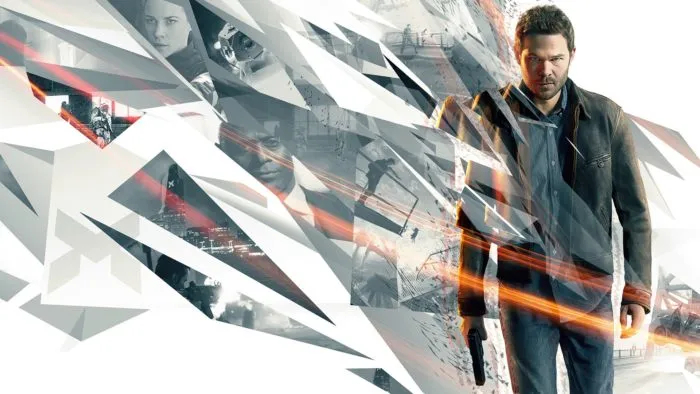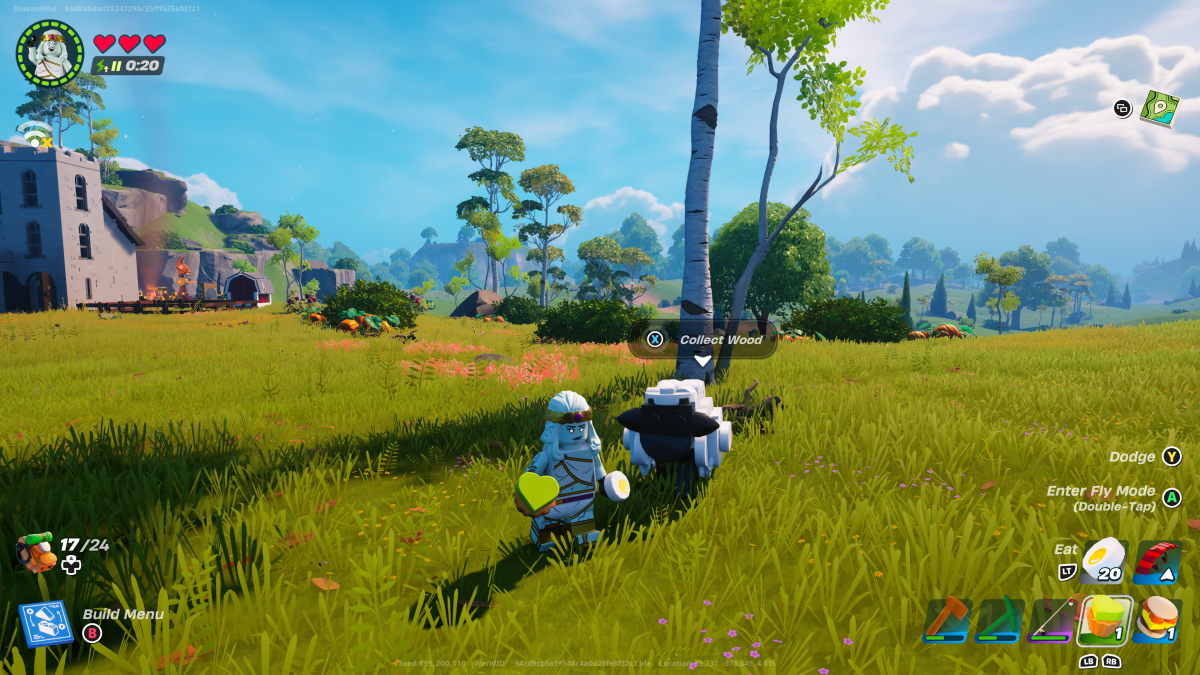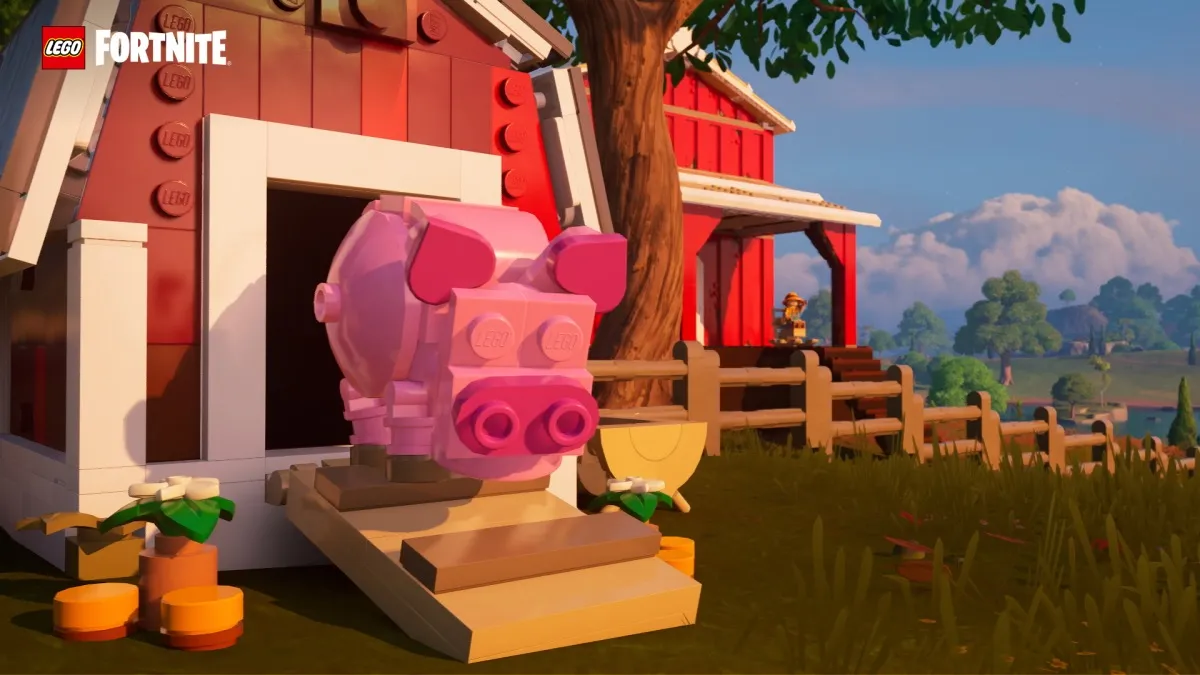Japanese third-party developer Technobrain just released Kansai International Airport (RJBB) for Microsoft Flight Simulator.
As the largest international hub serving the area of Osaka and western Japan in general, Kansai is definitely a relevant airport if you enjoy flying in Japan. Not only is it home to plenty of international flights to and from the country (both passenger and cargo), but also many domestic flights to a large variety of destinations.
Its position on an artificial island quite far from the shore makes it rather unique, alongside the beauty of the longest airport terminal in the world designed by famous architect Renzo Piano.
It’s currently available on Simmarket and on the official in-sim marketplace for $19.99 plus applicable VAT, but it’s worth mentioning that it won’t work on Xbox for now.
If you’d like an extensive look at the scenery, you can watch an ILS approach and landing on runway 06L in the first video above, and a full flyover in a variety of lighting and weather conditions in the second video below. Do keep in mind that the scenery doesn’t have any static aircraft. The airliners you see here are part of dynamic AI traffic solutions from a couple of third-party developers.
Speaking of AI traffic, the airport works mostly well with it, with aircraft flawlessly navigating from the gates to all the runways despite the complexity of the layout.
On the other hand, the gates have not been properly assigned to airlines, so the AI aircraft will park pretty randomly (but admittedly, this is a feature that isn’t very widespread among developers just yet). Another issue is that cargo ramps have not been properly labeled as such, and have instead been identified as general aviation, which does cause some problems with using dedicated cargo AI.
Published SIDs and STARs work out of the box and match the charts, and the same can be said for instrumental approaches. The PAPI lights are also correctly calibrated on each runway.
Taxiways are all set up as they should be, with all ramps appropriately numbered. All ground services are also available (including the elusive fuel trucks) so we’re looking at an airport that is functionally very solid.
The orthophoto used as the base for the airport’s artificial island is adequate, even if it’s a little blurry in some areas. Yet, absolutely fantastic work has been done with terraforming. Developers often have trouble working with artificial islands due to their precise shapes that conflict with organic terrain, but here, the banks of the islands are beautifully shaped and refined, while a great job has also been done on the roads that pass under the taxiways and join the two runways.
Technobrain also correctly modeled additional elements like the piers extending to the threshold of runway 24L and their lighthouses (albeit the ferry docks are unfortunately missing), the massive bridge connecting the airport with southern Osaka (and its modeling is particularly exquisite), and the tanker berth off Runway 06R.
An element that feels a bit underdeveloped is the tetrapods along the breakwaters lining the borders of the island. In the real world, they’re very iconic elements of this kind of airport, but the developers used them very sparingly, resorting instead mostly to a flat texture.
I understand that implementing them all would have likely been problematic in terms of performance, but other Microsoft Flight Simulator developers (even freeware) managed to create low-polygon/resolution tetrapods that are still very convincing and perform very well. I’m confident that a developer with the experience and skills of Technobrain should be able to find a better balance on this.
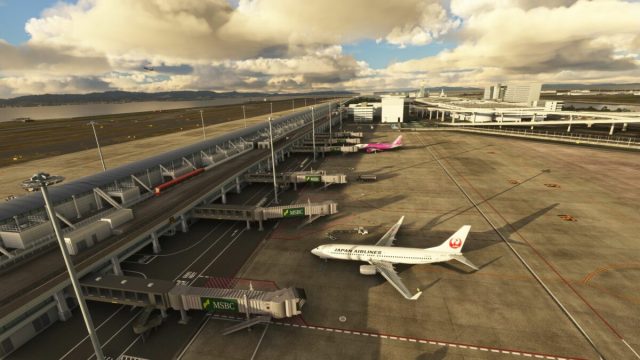
The texturing of runways and taxiways is absolutely top-notch, with beautiful and precise details. All the markings that I could verify are basically perfect, including the most subtle. They are also beautifully applied — precise but not cartoony. This is definitely one of my favorite aspects of the airport.
Moving on to the iconic terminal building, the modeling and texturing of the exterior are fantastic — clean but realistic, with just the right application of weathering and physically-based rendering.
Unfortunately, there is no interior modeling, with limited use of parallax shaders instead. This is, in my opinion, the weakest point of this scenery. Super detailed interior modeling isn’t something I consider mandatory for all airports (even if most high-level developers have achieved great results), but Kansai has absolutely enormous windowed areas right in your face as you’re parked at the gate.
Due to the very nature and architecture of the airport, I’d say that at least limited interior modeling would have been basically mandatory to achieve the best effect.
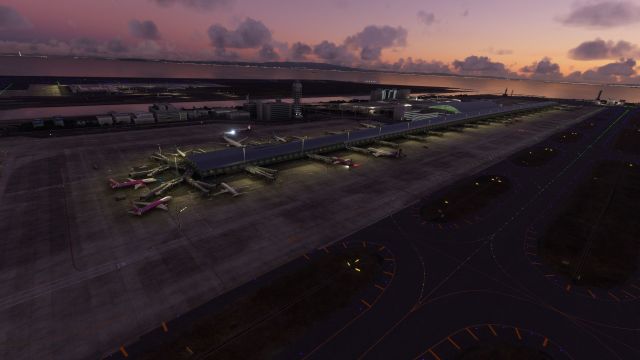
On the other hand, the jetways are great, with top-notch modeling and texturing (to the point that you’ll even see details like the air conditioners inside) and animations that work very well.
One thing that may bother some is that logos of real-world companies like the omnipresent SMBC have been altered (to MSBC) likely to avoid trademark issues. This is something Technobrain appears to be particularly sensitive about, despite the fact that most other developers utilize real logos without fear of repercussions, and have done so for decades. Luckily, a mod has already been released to fix this.
The superb modeling and texturing of the airside areas of the terminal extend landside, with great attention to detail all the way to the train station and the architecture of the Hotel Nikko. Unfortunately, the hotel’s branding is also missing, which is a pity.
Animated trains complete the terminal, and I absolutely love the detailing done under the elevated access roads. This is very rare in an airport of this size on Microsoft Flight Simulator.
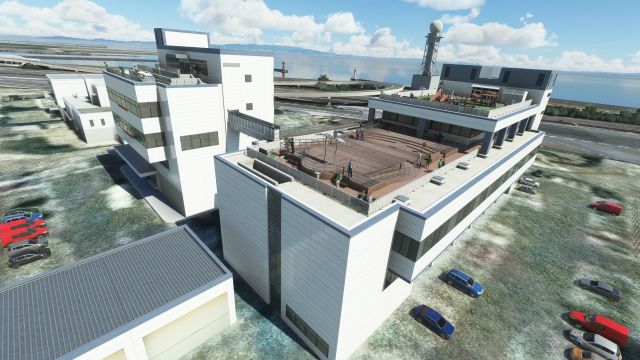
All the other buildings also showcase a similar attention to detail, with great modeling, weathering, and PBR application across the board. Hangars, warehouses, ATC towers, radars, and offices all look awesome.
A missing element that I think would have further improved the airport is the railway line that connects to the airport. Its electric poles are rather visible in the real world and they’re missing here, with the tracks simply painted on the ortho. This is rather odd, considering that the railway is nicely modeled on the bridge, but doesn’t extend all the way to the station when it reaches the island.
The Sky View aviation theme park and its observation deck are possibly one of the best features, with a fantastic and nearly lifelike rendition.
I also really appreciated the approach light bridges. Not only do they look awesome, but they have their own custom lights that work very well.
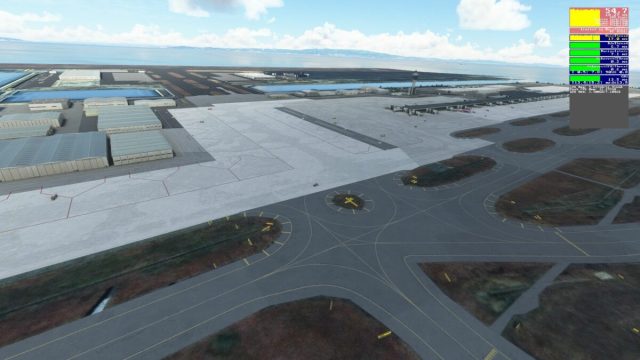
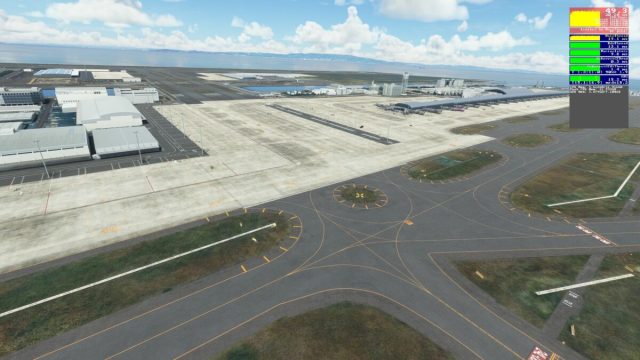
Night lighting is a bit spotty. While it’s great on runways, taxiways, and aprons, the terminal is mediocrely lit, compounding the issue with the lack of interiors.
Snow coverage is so-so, but not terrible, with the Microsoft Flight Simulator’s own approach to modeling snow depth based on the color of the base materials making it very difficult for developers to achieve a good effect on this front. On the other hand, Kansai Airport looks great in the rain.
Performance is very generous. My PC (RTX 3070, Ryzen 9 3900x, 32 GB RAM) at 1440p resolution and ultra graphics settings loses only 5-6 FPS, despite the enormous difference in fidelity (as you can see above). That being said, this tells me that there would have been some overhead that could have been used to add more details like better tetrapod coverage, the terminal’s interior, the railway, and docks.
Ultimately, Technobrain’s Kansai Airport for Microsoft Flight Simulator comes with high quality and many good points, but it lacks a few things that would make it a truly top-notch product.
That being said, it’s still by far the best representation of this important passenger and cargo hub available for the sim, so it’s very easy to recommend if you love flying in Japan.
- Fantastic modeling and texturing for all included buildings.
- Runways, taxiways, and aprons look great and realistic.
- Terraforming is top-notch.
- Detailed custom animated jetways.
- Some elements that are often overlooked are really well done.
- By far the best rendition of this airport on the market.
- No interior modeling in an airport that would need it.
- Modified or missing logos to avoid using real-world brands.
- Cargo ramps are marked as general aviation and airlines aren't asigned to specific gates.
- Tetrapods which are iconic of the artificial island are used too sparsely.
- Night lighting is hit and miss.

